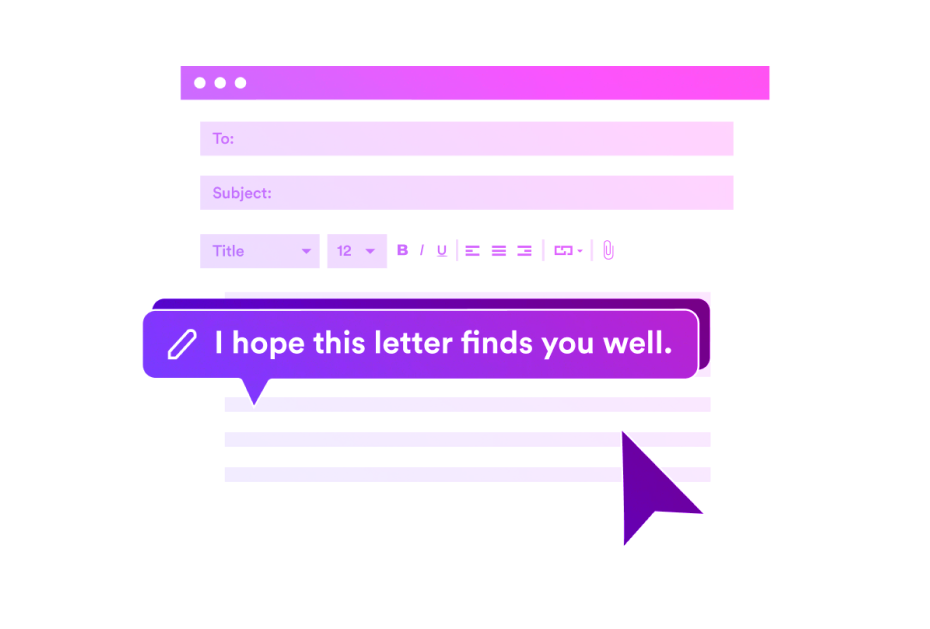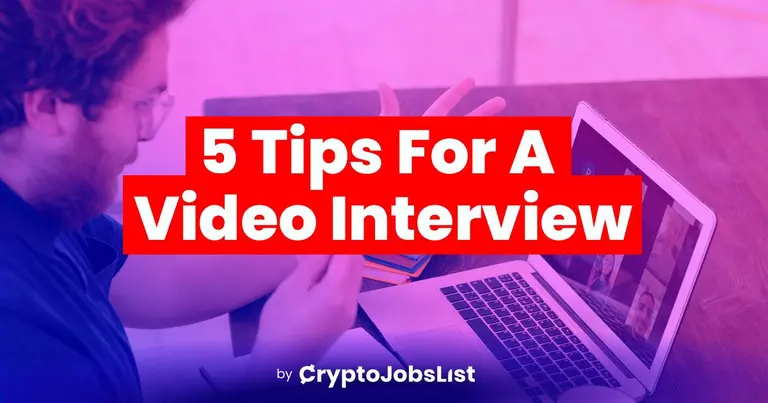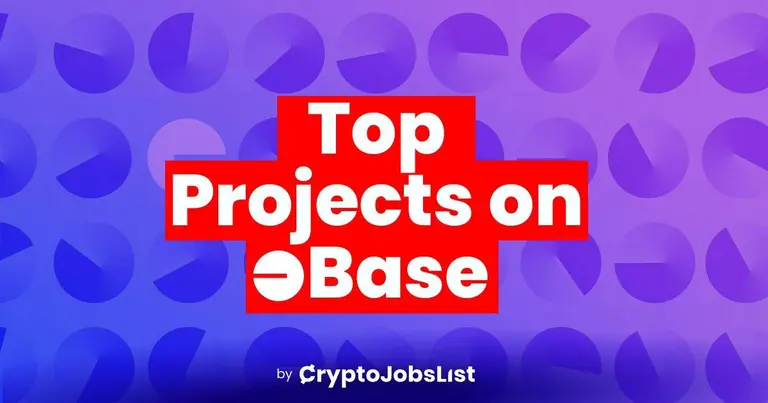Web3 job applications, believe it or not, work the same way a non-web3 job application would. Despite the massive differences between both, hiring managers still want a resume, a cover letter, and a portfolio as a standard practice. And while resumes, portfolio formats haven’t evolved much and are objective, the jury is still out on the cover letter - a rather subjective, open-ended document.
So you might ask, what’s the correct way to write a cover letter for a Web3 job? We’re going to help you out with that today.
Why write a cover letter?
Hiring in Web3 is pretty cut-throat at the moment. While the demand for experienced Web3 professionals continues to go up, the talent pool isn’t all that massive - or at least it’s thought to be that way. Which means the issue likely could be that applicants are not representing themselves all that well.
Below average cover letters don’t help either. They’re, in fact, an extremely important component of your application. Cover letters written specifically for the said job role, go on to genuinely establish your interest even as a newbie to the space.
To add to that, sending in a cover letter gives you a competitive edge. Web3 companies receive hundreds of resumes for a job role coupled with a relatively lower number of cover letters, but only few go so far as to write a winning cover letter. Absence of it can lead recruiters to take it as a sign of laziness, lack of motivation, not enough passion for decentralized technology, among various other reasons.
Web3 cover letter writing tips

It can be stress-causing when a dream job opens and you don’t quite get how to send in an application that gets noticed. Maybe you’ve done it before and never got a response, after all, it's widely accepted that factors like existing experience in the blockchain space or being skilled in a particular Web3 tech stack count a lot. But they’re not the only ones.
There are numerous other ways you can try to prove your skills, experience, and willingness to learn. You just need to know how.
1. Show them you DYOR (do your own research)
A ready-made standard resume and cover letter paired with an easy-apply option is job hunting heaven to applicants. We’ve all been guilty of mass applying to jobs at various points of our careers, but the truth is, that’s not the best approach and it mostly works against us.
You see, mass applying makes it humanly impossible to get to know each job role up close and what it means for every single company we’re applying to. Because we exhaust ourselves by applying to so many jobs, we also tend to overlook what a particular company or project is about, what their mission is going forward, and what kind of product/s they have to achieve their purpose.
So, there’s a slight possibility that despite having a great skill set and years of experience, your cover letter doesn’t demonstrate any knowledge about the company you’re applying to. And companies, especially Web3 companies, want to bring people on board who deeply resonate with their project and mission.
Any opportunity to research and talk about the company’s culture, product developments, upcoming features and activities goes to show that you’re updated on current events, and are serious and selective about applying to the role.
2. Match your skills and past experiences with the job’s requirements
It should go without saying, but no one hiring in Web3 wants to hear how you helped your company write copy for a landing page when the concerned job role is for a Solidity engineer. Recruiters are short on time and even shorter on attention, so use that time to highlight how a past success could potentially solve a current problem for them.
For example, a Project Manager role job description mentions that they need the ideal applicant to streamline work processes and increase efficiency in the team. The past success, in this case, would be to mention that in your previous role you identified bottlenecks and implemented a new workflow system, and that because of your proven track record, you could address and overcome similar obstacles for them.
You should also remember that your cover letter has to be concise and to the point, so in the space you have, give context to what you’ve briefly mentioned in your resume and what you show in your portfolio. Connect the dots from there to this job in your cover letter because it would be your only (initial) way to explain your expertise to them.
3. Convince them with numbers
In the example mentioned above, we deliberately left out numbers. Upon reading that statement, a recruiter could have several questions like:
- How long did it take to implement the workflow system?
- How much did efficiency go up in the team?
- Was there any tangible reduction in turnaround time?
Having these questions answered for a recruiter can be extremely helpful as they establish a clear picture of what was tangibly achieved in a given amount of time. This instantly works in your favor because it catches the recruiter’s attention and makes you stand out as a valuable resource.
Here’s how you could use numbers. You spent $21,000 on influencer marketing for your first quarter at the job, you were able to onboard 50,000 users from influencer channels for $0.42/user as compared to the previous CAC of $4.5/user through traditional social media ads. Out of those 50,000 users, 5,000 users spent $25/each that quarter on your blockchain tools bringing in $125,000 to the company ($104,000 if the initial investment of $21,000 is subtracted).
The above example is just for show. Depending on your previous and desired job, plus the kind of performance indicators they have, you can tailor this example to yourself. It is important to note that you shouldn’t come up with made up numbers to support your case. A lot of what you say in your cover letter can come up as a question in interviews and reference checks, and if not corroborated can be a bad look. Moreover, there could be a chance your previous workplace might have a privacy concern so you should either take permission or see what kind of numbers, like percentages, wouldn’t violate safety.
4. Tailor your letter to the job
We often use the same resumes for job applications, but it doesn’t work the same way for cover letters. Many job seekers make the common error of submitting the same old, generic cover letter and wonder why they receive no response.
Your Web3 cover letter should be different from the last one you sent because its purpose is to show why you’re a great fit for the particular role you’re applying to. It should reference the company, align with its mission, address the job requirements, and highlight how you can contribute to solving their current challenges - all of which is not achievable with a generic cover letter.
While it is possible to secure a position with a generic cover letter, for top Web3 jobs at leading companies, you must give your A-game. When you’re applying for a job, apply meaningfully with all your details and cover letter, and keep doing it.
5. Talk and write like yourself
No matter how technical your work is, at the end of the day, recruiters are human and they want to review applications that are human. That is why your Web3 cover letter should reflect your authentic voice, skills, and experiences so that you make a positive impression on recruiters from the get-go and they’re able to resonate with you more.
By maintaining your unique tone and style, you can create a more genuine and engaging cover letter that showcases your individuality and sets you apart from other candidates. It should, however, be noted that there should be a good balance of casual and professional in your tone as you want to come across as pleasant but also serious about the role.
It’s also important, now more than ever, to talk and write like yourself because AI-written cover letters are in abundance and recruiters can’t stand them. They’ve taken the fun out of reading someone’s unique story, and now made everyone's stories sound the same with jargon that no one really uses (something AI’s great at doing). If recruiters read ‘tapestry’ or ‘robust’ one more time, they’ll run. Don’t let it come to that.
Reasons why your cover letter is weak
While lack of skills and experience could be reasons as to why you’re not hearing back from a Web3 company, sometimes it can also be because your cover letter is weak. Let’s look at some factors that are making it so.
1. You follow generic templates
We all love and get inspired by cover letter templates. That’s how we got our very first cover letter copies, right? However, as much as we may use them for inspiration, many individuals simply fill in the blanks on a template without customizing. Sometimes they don’t even remove braces and the letter reads {add company name} in overlooked parts. It also doesn’t help that recruiters have grown accustomed to spotting generic and duplicated content. Your cover letter can’t help you after that.
Templates or samples can work great as examples and to provide a foundation. But for important Web3 roles, generic cover letter templates won’t cut it. You’ll have to personally write yours and let your voice and experiences stand out for you.
2. You use technical jargon
More often than not, cover letters are manually reviewed by recruiters with a non-technical background, and while technical knowledge is great to have for Web3 roles, your letter should be fairly easy to read and understand. That means you should refrain from using jargon which could include acronyms, abbreviations, and technical terms. If you do use them, you may risk losing their interest.
You might think that a technical job role application requires technical jargon, because only then would the recruiter know that you are qualified. But it’s not the case. Plenty of great technical Web3 cover letters break things down with easier terms, so that the reader is able to understand all your technical qualifications with ease.
3. You get too busy talking about yourself
We’re accustomed to pitching ourselves, our qualifications and experiences when we write cover letters. However, we sometimes fail to place importance and focus on the company, and are unable to explain how we bring value to the company because of its mission and future goals.
At the end of the day, the various job roles a Web3 company wants to fill, are for the benefit of the organization. So if there is no mention or acknowledgement of the company in the letter, it may come across as you not taking an interest in them.
4. You demonstrate negativity
You’ve probably heard before to steer clear of saying negative things about your previous companies, bosses, as well as the kind of work you had to do. It isn’t a good look, and several recruiters may get the sense that you’re not motivated and positive for the job you’re applying to.
Even if a negative experience absolutely has to be shared, you should focus on morphing the tone and talk about that experience as a positive learning.
5. You give unnecessary information
Adding information irrelevant to the job or repeating something mentioned already, can reflect poorly on your chances as a job applicant. A recruiter is interested in knowing the qualifications, skills and experiences explained in your cover letter so that they can judge you for the job you’re applying to. But if you mention hobbies like knitting, camping or swimming, they will be deemed irrelevant hence shouldn’t be taking up space in your cover letter.
As a parting note, recruiters go through hundreds, if not thousands, of resumes and cover letters in a month alone. They are remarkably adept at weeding out the copied or AI-generated ones (yes, AI cover letters are a big no) from the genuine ones with a unique voice and effort. So do go that extra mile.
Deeply think about what you’ve accomplished so far, how your skills match with the job role and use your own voice to make your case.









